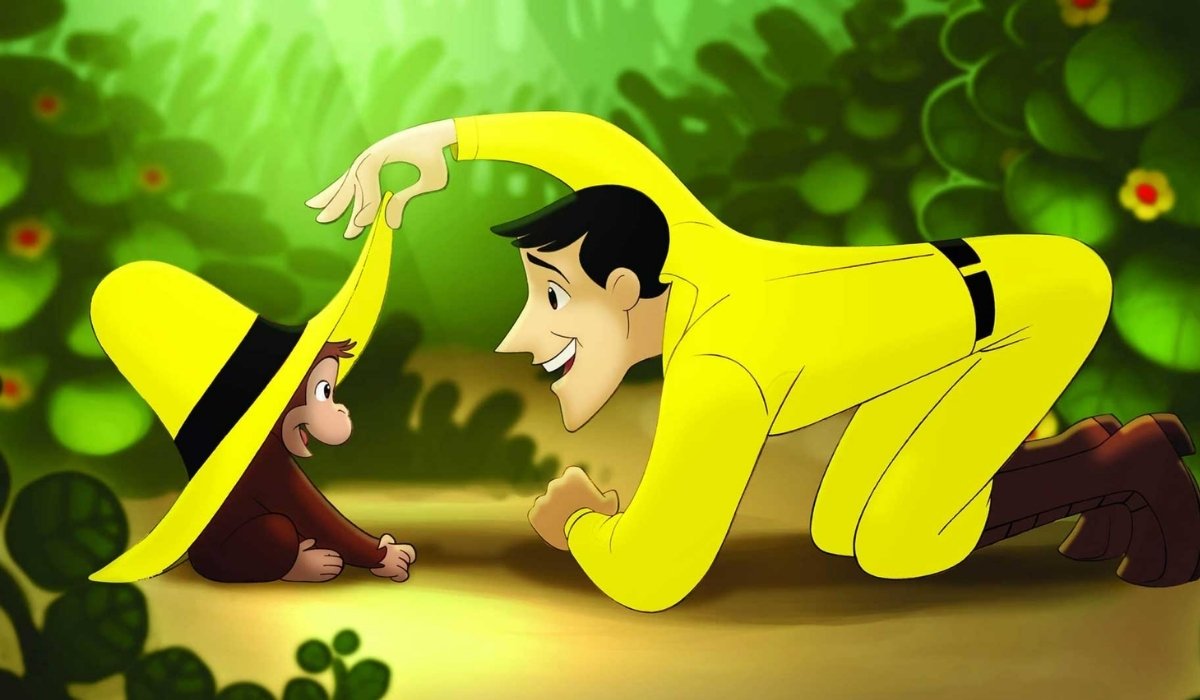Few characters in children’s literature are as enduring and instantly recognizable as The Man in The Yellow Hat. As the steadfast companion of Curious George, he has been a central figure in stories that have captivated generations of young readers and viewers. His iconic yellow outfit and gentle demeanor make him stand out, but despite his constant presence, he remains nameless. This curious choice by the authors has intrigued fans for decades. In this article, we will explore the origins of The Man in The Yellow Hat, the creative decisions behind his namelessness, the implications for storytelling, and the enduring appeal of his character.
The Origins of The Man in The Yellow Hat
The Man in The Yellow Hat was created by H.A. Rey and Margret Rey during the 1940s, a period of innovation and experimentation in children’s literature. The Reys, both talented illustrators and storytellers, wanted to create a character that was both relatable and comforting for children. Unlike many characters with elaborate backstories or complex personalities, the man was designed as a simple, caring, and nurturing figure.
His bright yellow clothing was not just a stylistic choice but a deliberate design to make him immediately recognizable in illustrations, ensuring that young readers could easily identify him in every story. The simplicity of his design, paired with his nameless identity, contributed to the universality of his character, allowing children to focus on his actions and relationship with Curious George rather than being distracted by details of his personal life.
The Creative Decision Behind Namelessness
One of the most intriguing aspects of The Man in The Yellow Hat is the decision to never give him a proper name. This choice reflects a deliberate narrative strategy. By keeping the character nameless, the Reys allowed him to serve as a blank canvas onto which children could project their own ideas of authority, kindness, and guidance. A named character often carries specific cultural, historical, or social connotations.
By avoiding a name, the authors freed the character from these limitations, allowing him to exist purely as a figure of trust and comfort in the stories. The namelessness also emphasizes the focus of the series on Curious George himself. While the man guides and cares for George, the stories are centered on the monkey’s adventures and curiosity.
The Role of Simplicity in Children’s Literature
In the context of children’s literature, simplicity is a powerful tool. Characters like The Man in The Yellow Hat are deliberately designed to be easy for children to understand and relate to. His nameless identity contributes to this simplicity, removing unnecessary complexity from the narrative. Young readers are not burdened with remembering additional character details or deciphering symbolic meanings behind names. Instead, they can focus on the moral lessons, humor, and imaginative scenarios presented in the stories. This simplicity also enhances accessibility, making the character relatable across different cultures and languages, as there is no cultural baggage associated with a personal name.
The Man in The Yellow Hat as a Symbol
Beyond being a simple caregiver, The Man in The Yellow Hat functions as a symbolic figure within the Curious George series. He represents guidance, safety, and stability in a world full of surprises and challenges. His namelessness allows him to transcend individual identity, becoming a universal symbol of nurturing authority. Children can see him as a parental figure, a mentor, or even an idealized friend, depending on their own experiences and perspectives. This symbolic quality contributes to the character’s timeless appeal, as each new generation of readers can interpret him in ways that resonate with their own lives.
Impact on Storytelling and Character Dynamics
The absence of a name for The Man in The Yellow Hat also impacts the storytelling and dynamics between characters. By focusing attention on Curious George, the stories emphasize exploration, curiosity, and learning. The man’s role is to guide without overshadowing the monkey’s adventures. This balance between guidance and independence is crucial for the narrative, as it mirrors real-life relationships between children and caregivers. The nameless man is present, supportive, and responsible, but he does not dominate the story. This creates a dynamic where George’s actions, mistakes, and discoveries take center stage, reinforcing the themes of curiosity and problem-solving.
Cultural and Psychological Considerations
From a cultural and psychological perspective, nameless characters like The Man in The Yellow Hat can have a significant impact on children’s development. Psychologists suggest that children benefit from characters who are relatable yet flexible, allowing them to project their own ideas and emotions. By not naming the character, the authors avoided imposing rigid identity traits, enabling children to connect with him in diverse ways. Additionally, the man’s bright yellow attire is visually stimulating, promoting recognition and engagement. The color yellow is often associated with warmth, optimism, and positivity, which complements his role as a nurturing figure and reinforces the emotional safety that children feel when engaging with the stories.
The Evolution of the Character in Media Adaptations
Over the decades, The Man in The Yellow Hat has appeared in countless media adaptations, including television series, animated films, and merchandise. Despite these changes in format, his nameless identity has remained consistent. This continuity underscores the importance of his simplicity and universality. While other characters might evolve or receive expanded backstories in adaptations, the man’s role remains steady: he is the constant, reliable companion of Curious George. His enduring appeal demonstrates that complexity and detail are not always necessary for a character to be engaging or memorable. In fact, his consistency has likely contributed to the longevity of the series, as audiences can rely on him as a familiar and comforting presence.
Fan Theories and Speculation
The lack of a name has also fueled speculation and fan theories. Some suggest that giving him a name might diminish the universality of his character, while others have speculated that he may have a secret backstory left intentionally untold. These discussions highlight the fascination that surrounds nameless characters and the creative potential they inspire. The ambiguity allows readers and viewers to fill in the gaps themselves, making their engagement with the stories more interactive. It also creates a subtle sense of mystery, keeping audiences curious and invested in the character even decades after his creation.
Why Namelessness Matters Today
Even in contemporary children’s literature and media, The Man in The Yellow Hat remains a model for how simplicity and namelessness can enhance storytelling. In an era of complex characters and intricate narratives, his timeless design reminds authors and creators that sometimes less is more. His namelessness ensures that he is not tied to a specific era, culture, or demographic, making him relatable to children all over the world. It also demonstrates the importance of focusing on relationships, experiences, and moral lessons rather than overly detailed character profiles. This approach has influenced many modern creators and continues to serve as a benchmark for character design in children’s media.
Conclusion
The enduring mystery of why The Man in The Yellow Hat does not have a name can be understood as a deliberate and thoughtful creative decision. By remaining nameless, he becomes a universal figure of guidance, care, and stability, allowing readers to focus on Curious George and the adventures they share. His simplicity, symbolic role, and consistent presence have contributed to the timelessness of the series. More than just a character in a children’s story, he represents the power of subtlety, the effectiveness of universal symbolism, and the enduring charm of thoughtful storytelling.
By keeping him nameless, H.A. Rey and Margret Rey created a figure that continues to resonate with audiences decades later, proving that some mysteries are best left unsolved.
Frequently Asked Questions
1. Why doesn’t The Man in The Yellow Hat have a name?
- The Reys intentionally left him nameless to create a universal, relatable figure that children could connect with without cultural or personal limitations.
2. What does The Man in The Yellow Hat symbolize?
- He symbolizes guidance, safety, and nurturing authority, allowing children to see him as a parental figure or mentor.
3. Has The Man in The Yellow Hat ever been given a name in adaptations?
- No, across all books, cartoons, and movies, he remains consistently nameless to maintain simplicity and universality.
4. Why is his outfit yellow?
- The bright yellow color was chosen to make him visually distinctive, easily recognizable, and symbolically warm and positive.
5. Does being nameless affect his role in the stories?
- Yes, it ensures that the focus stays on Curious George’s adventures while the man provides support without overshadowing the main character.








